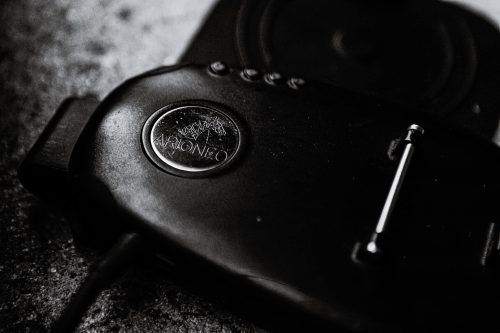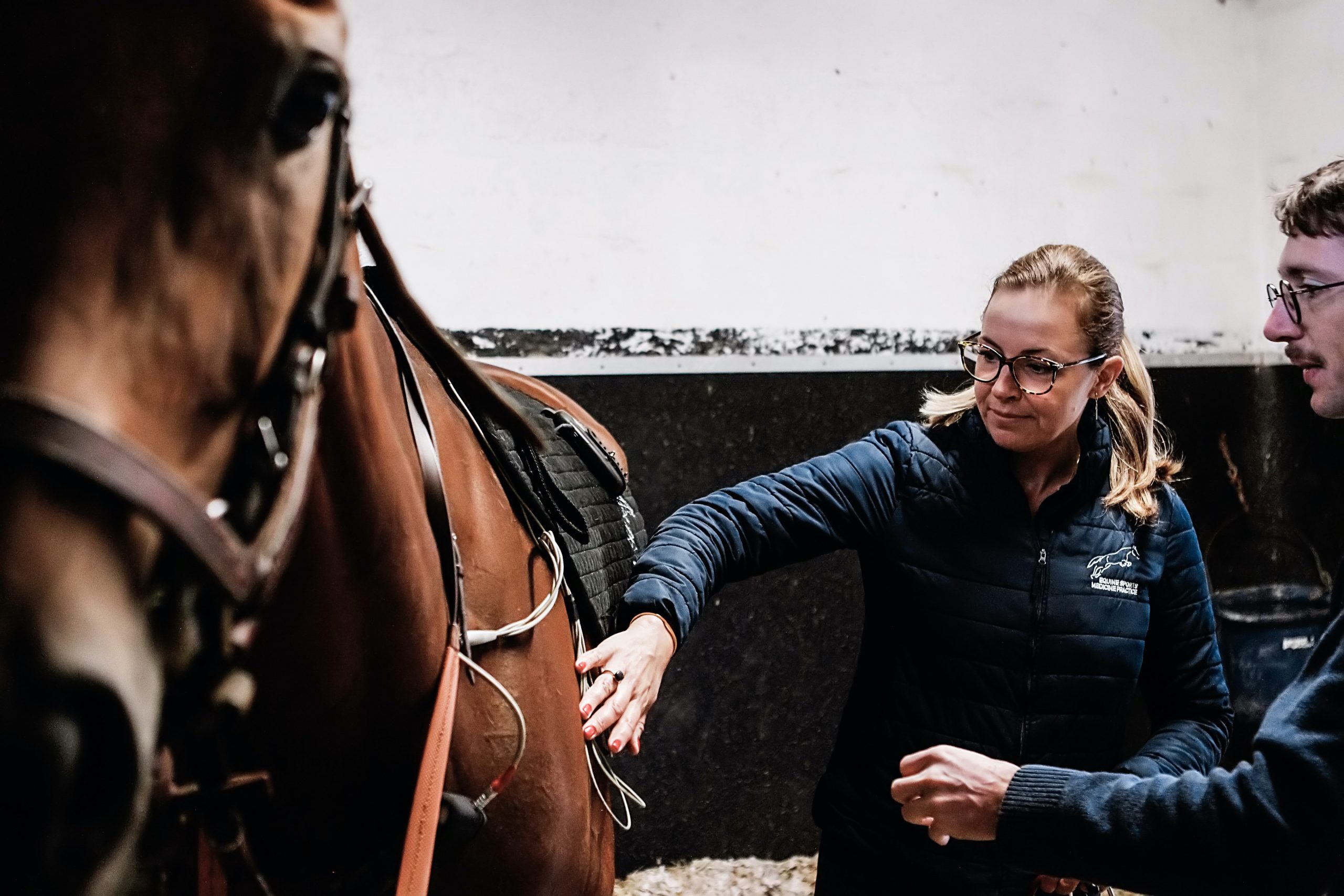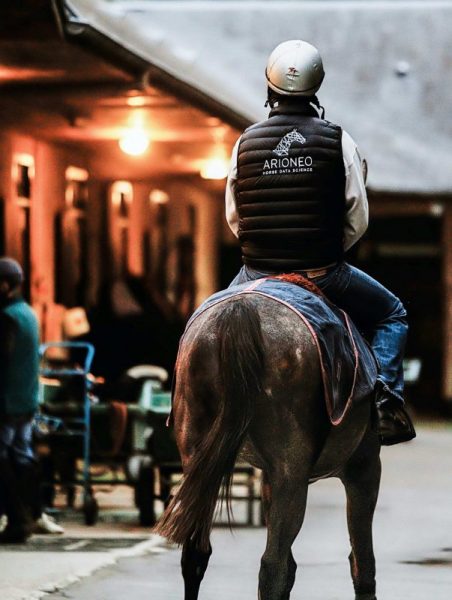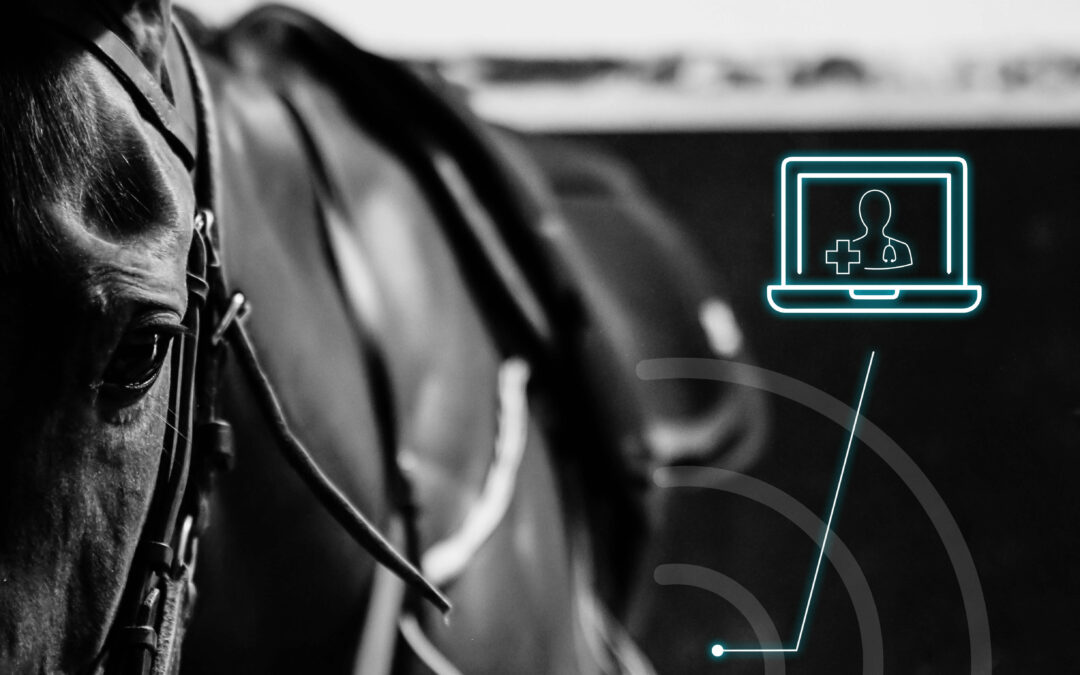Trainers, owners and veterinarians all come together around a common challenge: ensuring the well-being and health of the racehorse in order to improve his performance. As top athletes, racehorses are monitored by a medical team on the lookout for the slightest sign of a pathology.
Tools for measuring medical parameters such as EQUIMETRE provide information to the trainer and the veterinarian. Collecting and centralizing data such as heart rate, speed or ECG has a double benefit: monitoring both the performance and the health of the horse.
How will telemedicine transform today’s veterinary practices? What are its biggest challenges?
VETERINARY TELEMEDICINE
Veterinary telemedicine is defined as “a form of remote veterinary practice using information, communication and technologies. It brings one or more players, including a veterinarian, into contact with each other or with the animal or herd” (Académie vétérinaire de France, 2017).
In France, telemedicine has been prohibited until now due to the lack of a regulatory framework for the practice. However, since 18 May 2020, veterinarians registered with the Order of Veterinarians can now carry out telemedicine in addition to their current practice, on an experimental basis for a period of 18 months. The Order of Veterinarians and the Ministry of Agriculture will evaluate this new practice in 2021, at the end of the trial period to discuss its future.
EQUIMETRE, A TELEMEDICINE TOOL
A veterinarian may be able to judge remotely whether an on-site intervention for examinations is necessary by having access to the training data. Analysing locomotor parameters and assessing recovery according to the intensity of a training can provide valuable information to veterinarians to explain poor performance or support rehabilitation. This link also allows the trainer and the owner to work with serenity, thanks to veterinary advice obtained more quickly, more frequently and more efficiently.
The Equimetre platform accounts include a specific feature developed for veterinarians who wish to practice telemedicine. A system of linked mirror accounts allows veterinarians to consult the horses of all their clients and clients to consult their own accounts concerning the training of their horses.

Thus, from their offices, veterinarians can analyse their patients’ training, answer remotely to any doubts from the trainer and detect early warning signs of pain or abnormal cardio in order to intervene as quickly as possible.
The patented electrodes of the EQUIMETRE sensor also make it possible to record a complete, fine and precise electrocardiogram during the entire training time, even at full speed. In case of doubt, veterinarians can therefore study all the raw data recorded by the sensor in their absence, including all the electrocardiograms of the training performed. For example, it is possible to detect cardiac pathologies, arrhythmias, or other cardiac rhythm disorders.
The interview of Dr. Emmanuelle Van Erck about telemedicine
Could you introduce yourself?
Emmanuelle Van Erck – I am a veterinarian, specialized in internal medicine and horse sports medicine. I worked for nearly 15 years at the university, where I used to research on the physiology of sport horses. I then set up my own private referral practice, specialized in sports medicine, the “Equine Sports Medicine Practice”. We go from stable to stable to examine horses referred for underperformance, or horses that are performing well and whose owners, riders and trainers want to make sure that the horse will be able to continue a good competitive season. We thus carry out a whole series of tests to ensure that the racehorse is in good health.
Could you explain your vision of the concept of telemedicine? What do you see as its short-term objectives?
With sport horses, we benefit from the fact that they train every day. Collecting data during training gives us interesting information in addition to a clinical examination at rest. We are already indirectly doing telemedicine when we watch videos of horses in competition: we evaluate how the horse performs his course if he is a showjumping horse for example. During a race, we can analyze how strategically the horse holds his effort.
Some tools allow us to capture the response of the horse at work. They give us the means to access information that we would not otherwise have had unless we are present with the trainer daily to watch the horses (which is unfortunately not possible).
Having tools that allow us to collect data is therefore a form of telemedicine since we can follow our horses remotely, connect to a platform to access and analyze data. We can thus determine whether the horse responds in a normal way to his training. If he has improved over a given period of time, it means that his training is well conducted and in line with his physiology. We will be able to see the benefits of this training through performance. However, the horse may have an underlying physical problem if the parameters deteriorate compared to what the horse is used to doing or when they are lower than those of other horses of the same level and category. Is he over-trained? Does he have a health problem, a disease? We can speak of a subclinical disease: the horse seems to be doing well but the sensor detects small deteriorations of some parameters. This allows us to intervene much earlier in our medical monitoring process. We are able to investigate a locomotor, respiratory or cardiac problem before it has a real impact on performance. The goal is to resolve these problems before the horse is in competition to avoid underperformance or an accident.
The main objectives of telemedicine are therefore to detect sub-clinical diseases and to carry out comprehensive prevention work. What are its major challenges?
If telemedicine is implemented in veterinary practice, one of our biggest challenges will be to have systems that are easy enough to implement so that trainers and riders adopt them. The horse has to be equipped easily and quickly without the system being too invasive. If it takes too much time to set up on the horse or if the data collection and downloading require too much handling, this will be a real obstacle to the integration of these technologies in daily training. However, if the system is ergonomic, recognizes the horse automatically, and sends the data to an external server without intervention, it will allow having the information quickly. The work will be easier. To give you an example, before the Equimetre, when we wanted to carry out an electrocardiogram as well as an analysis of locomotion during an exercise, we had devices that were all independent of each other. We had to import the data separately, put the speed data on one side, the heart rate on the other side, look at the ECGs, and then synchronize all these recordings. It was tedious and time-consuming, and therefore expensive. With EQUIMETRE, everyone can benefit from it, trainers are interested in speed data during training and we, vets, are interested in physiological and medical data.
For your clients, there is an important economic stake, because you show a real saving of time and for them, it makes a consultation less expensive. Would you be able to give an order of magnitude on the savings made?
It’s complicated because we’re still very early in the process. For example, we did not always have access to horses during the period of containment due to Corona Virus. It became complicated to meet the existing demand. Obtaining information from the owner through videos and measured parameters already allowed us to give an opinion on the medical state while waiting to be able to examine the horse. We did not establish a remote diagnosis but it allowed us to establish priorities: to say “this horse must be seen urgently” or “this horse can wait for such and such care”. We always have to be very attentive to the advice we can give because we don’t want to miss something or unnecessarily medicalize a horse that doesn’t need it. But it is an approach that can really be useful. It allows us to have access to many more horses and to work on all the horses in a stable rather than going to see a horse that has a specific problem. We can do prevention work on the whole stable.
What are the points of vigilance with regard to telemedicine? Can this practice be carried out without violating codes of ethics?
It is precisely necessary for the Order of Veterinarians to reflect on what telemedicine can be. In human medicine, telemedicine already exists for imaging. X-rays can be taken in a hospital and sent to a radiologist in another institution for interpretation by a specialist. This is also done with horses. However, it must be clearly established who is responsible in the case of disputes. This question of responsibility is important, and the limits of telemedicine must be clearly defined. It is possible to give an opinion remotely, but it will never be the same as being present with all five senses on alert.

In my field of activity, I see a very great interest in telemedicine in improving patient monitoring. If I diagnose a heart condition on a racehorse, it is important to me for the management of its career and the safety of its rider to follow how it evolves with its condition.
Today, depending on the heart problem diagnosed, we can decide to see a horse again within 6 months. But if I have a sensor that I can put on this horse in training during these 6 months, I can objectively evaluate if his physical condition is evolving well. On the contrary, I can see if a different treatment or training needs to be put in place. This allows us to be really more precise and reactive in our interventions.
What kind of impact could the digital revolution have on your daily life? In the future of the profession?
This revolution is unavoidable, and we really have to make the most of it. These are tools that help. They don’t replace us; they don’t replace the trainer or the rider but they make the horse talk. They will in a much more sensitive way put a figure on a possible problem and allow the adaptation of physical training. Professional coaches in sports such as football, rugby, or swimming have already put these tools in place. Sports trainers can work on the data to individualize training and avoid overtraining.
In conclusion, how do you see the future of your profession? Can you picture having patients all over the world?
Yes, this is the opening that these new technologies offer us. We are going to have much more global information. Big Data will allow us to know what is relevant to look at and what is not. We will therefore be able to improve the health and well-being of the horse, whether in competition, training, or transport. Awareness of animal welfare has increased enormously in recent years. We need to make sure that horses are not put into the red by a proven methodology rather than by a subjective “feeling”. If a horse changes grooms, valuable information is lost. Introducing a continuous element over time allows us to keep track of any changes.
Can we talk about tele-research?
Yes absolutely. With this type of sensor, we can generate a lot of data, work with research groups all over the world and with the same tools. A larger volume of data implies a more powerful, finer, and more specific research. So, I think we’re moving towards real progress.
A final word?
The transition is coming, and we’ve been waiting for it for a long time. When I started my career at university, we had to watch horses on treadmills because we didn’t have the tools to look at everything that we can measure now in training. Today, we have equipment that allows us to have a continuous eye on the field. We are able to develop much more powerful analyses, depending on changes in track, rider for example, and this for each individual. Tomorrow is already there!

Keywords : veterinary telemedicine, equine veterinarian, exercising ECG, heart rate monitor


